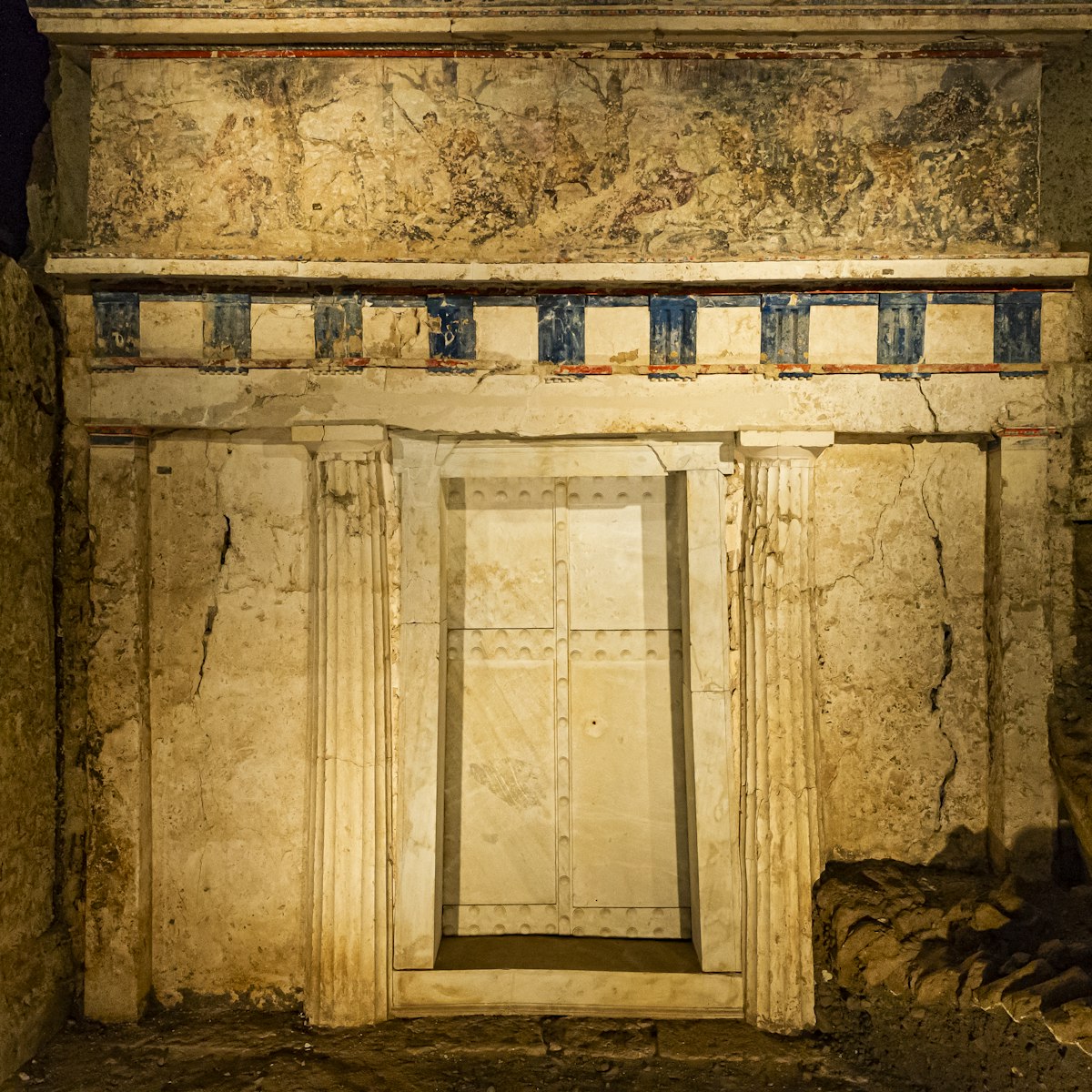Dating to the 5th century BC, Dion was sacred to ancient Macedonians worshipping the Olympian gods, especially Zeus, thought to reside on the awesome heights of nearby Olympus. Before his world-binding conquests, Alexander the Great made sacrifices here. Signs and stone footings indicate extant sights including sacred springs, villas and a ruined Roman theatre. This watery, wooded area is also rich in wildlife: look out for frogs tumbling into often-flooded sanctuaries, and the snakes and kingfishers that hunt them.
The ruins of the 6th-century-BC Sanctuary of Demeter are the first you'll see and are the site's oldest. Further along is the leafy Sanctuary of Zeus Hypsistos, which bears copies of statues and column bases (the originals are in the on-site museum). Other replicas adorn the remnants of Dion’s (usually flooded) Sanctuary to Isis, goddess of childbirth, across a small bridge. As elsewhere in the Hellenistic world, worship of this Egyptian goddess was merged with that of Artemis and Aphrodite. Later constructions include 4th-century-AD Christian basilica ruins and public baths once paved with mosaics.
The park has a small visitor centre with cafe. Entry includes the Archaeological Museum of Dion, a 10-minute walk from the site and well worth the effort for its splendid statuary and mosaics. Taxis from Litohoro to Dion cost around €14.




